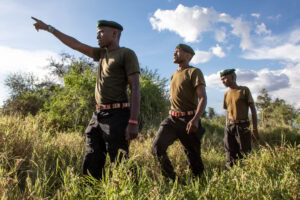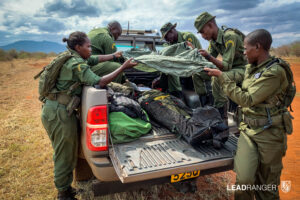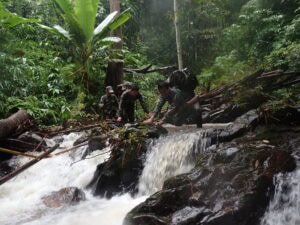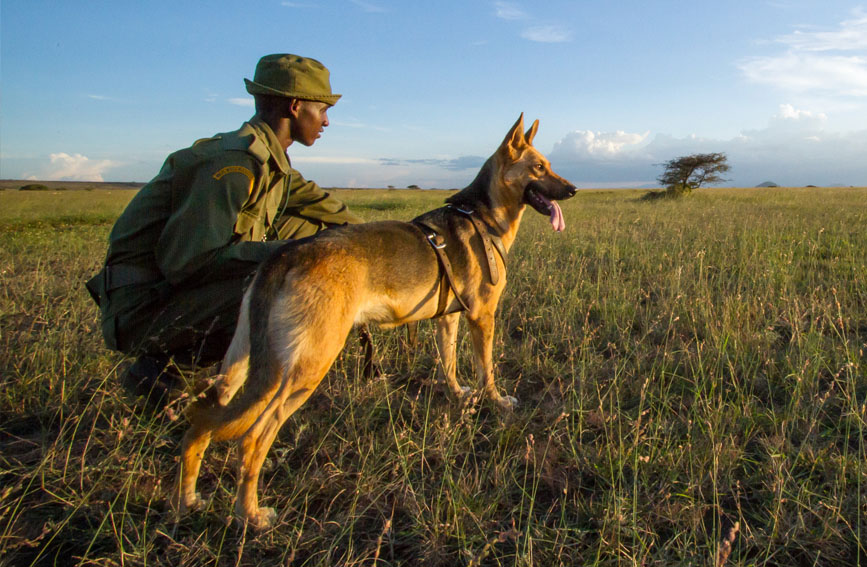Community-based conservation to protect the world’s largest wild horse.
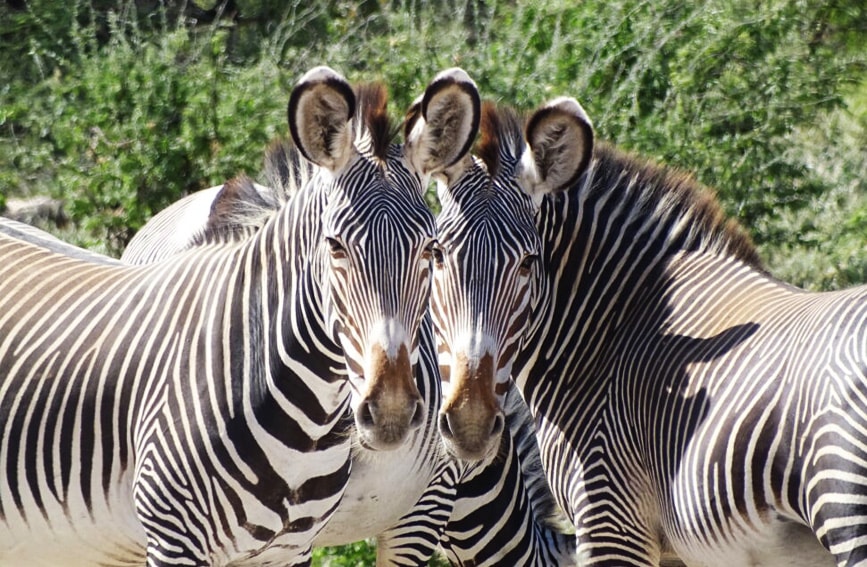
Feature Image: Two Grevy’s Zebra, identifaible by their brown muzzles, tightly striped coats and, as you can see here, huge fluffy ears! Image courtesy of Grevy’s Zebra Trust.
A new project partner with TGLF in 2021, Grevy’s Zebra Trust work with communities in northern Kenya to protect one of Africa’s most endangered large mammals.
Grévy’s zebra is one of three zebra species, the largest and now the rarest. Its fine striping is distinctive from plains zebras, as is its white belly. Grévy’s zebra’s range is now confined to Kenya and Ethiopia, and over the past 30 years, the population has declined from 15,000 to 3,000.
The Grevy’s Zebra Trust (GZT) project is located in El Barta, Samburu County, in northern Kenya. The population of Grevy’s zebra has declined there to an estimated 300, mostly as a result of poaching for subsistence meat.
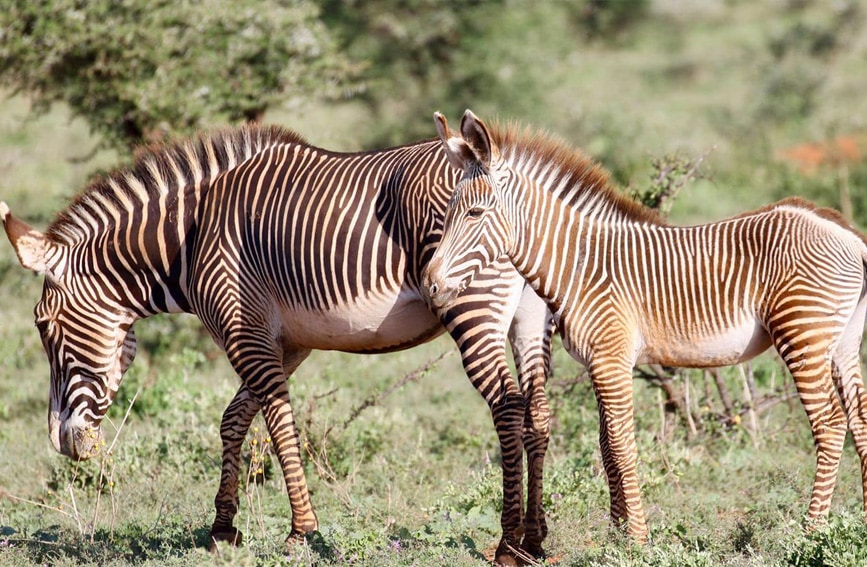
A young Grevy’s Zebra with it’s mother. Grevy’s Zebra can be identified by their white bellies, brown muzzles and densely striped coats. Image courtesy of Grevy’s Zebra Trust.
In 2007, GZT initiated its Grevy’s Zebra Ambassador Program to protect the zebras and other wildlife from poaching and displacement. It also collects data on Grévy’s zebra in order to understand their population status and inform local conservation strategies. The program has been very successful in engaging communities in conservation activities across the region, home to diverse wildlife including elephants and giraffe.
GZT’s team of community Rangers was given the name ‘Grevy’s Zebra Ambassadors’ for their dual function in monitoring and protecting wildlife, as well as being champions for the species. The Rangers are employed from both the Turkana and Samburu communities to ensure cooperation and trust-building.
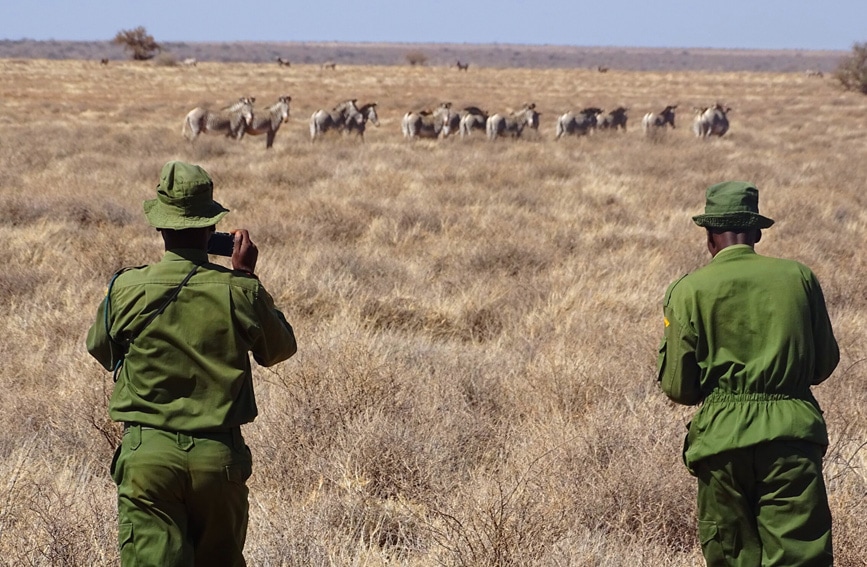
Two Grevy’s Zebra Trust Rangers during a Zebra survey patrol.
Image courtesy of Grevy’s Zebra Trust.
Currently, GZT employs 16 Rangers and two radio operators from nine villages. A permanent radio base serves as a communications hub between the different locations.
While poaching by communities that GZT has engaged has ceased, a serious poaching threat still exists from migrating pastoralists who have not had exposure to conservation, and from warriors who are planning livestock raids and live off wildlife.
To counter this external poaching threat, GZT worked with the Rangers’ respective village leaders to establish the El Barta Conservation Council (ECC), modelled on the traditional council of elders. The ECC is made up of 33 council members of mixed Samburu and Turkana ethnicity, and comprising one elder, one woman and one warrior from each of ten villages.

“Mama Grevy” – Ngeeti Lempate, former Grevy’s Zebra Scout, now Grassland Champion and also 2017 winner of Disney’s Conservation Hero Award. Image courtesy of Grevy’s Zebra Trust.
The mandate of the council is to network with each other to provide intelligence on planned livestock raids, engage with migrating pastoralists to deter poaching and ensure sustainable use of El Barta’s resources. The council also works with the area chiefs to keep them informed on any conflict. They have been trained in conservation conflict transformation, and have averted retaliatory attacks on wildlife, following livestock depredation. The ECC works closely with the Rangers to support their work.
Four of GZT’s senior team members have sent a message of thanks to TGLF’s supporters for funding the community-based wildlife monitoring and anti-poaching program.
Hear from Julius Lekenit, governance and partnerships manager, and Joel Loongo’nyo, El Barta regional coordinator, who are joined by Belinda Low Mackey, co-founder and executive director, and Sheila Funnell, program manager.
We thank you for your continued support – The Thin Green Line Foundation team.
